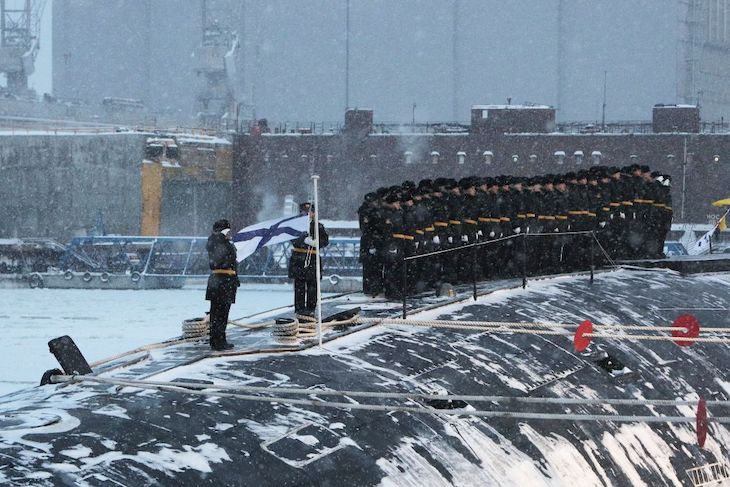War in Ukraine, and the arrival of Donald Trump in the White House, is forcing Europeans to prioritise defence. Keir Starmer has slashed Britain’s aid budget to pay for an increase in defence spending to 2.5 per cent of national income by 2027. But how should the UK use that uplift in order to keep itself safe?
The challenge posed by the Northern Fleet is – alongside Norway – essentially the UK’s problem to deal with
Many of the core assumptions which have underpinned British strategy for decades are being called into question. Amid the discussions centred on what a ‘Nato first’ policy for the UK looks like, there is growing consensus that Britain requires improved air and missile defences.
The missile capabilities of adversaries have grown considerably over the last decade, with Beijing, Moscow, and Tehran expanding their existing arsenals and developing new hypersonic and ballistic missiles. The most pressing of these threats to the UK rhymes with history; that of Russia’s Northern Fleet, a familiar foe from the Cold War. This danger in the north, emerging from the Barent and Norwegian Seas, should matter more to London than the threat of air and land launched missiles from beyond Nato’s Eastern Flank (especially now that Finland and Sweden have joined Nato) – although these cannot be ignored.
Moscow has partially-mobilised its economy for the war effort in Ukraine, and has stolen a march on European Nato in the race to rearm. However, the Russian army has lost vast amounts of manpower and equipment (including over 12,000 Armoured Combat Vehicles). Despite this, a large and experienced infantry army, backed by an array of strike weapons (which Russia had proved it can reconstitute at impressive speed) is not a threat to be sniffed at.
As a leading, and nuclear-armed, power in the alliance, the UK should play a role in supporting Nato’s eastern flank. British forces should continue to make vital contributions to bolstering the capabilities of Nato’s eastern flank forces; after all the trick to benefiting from a ‘buffer’ is to reinforce its ability to continue existing.
Yet there is no such buffer to distract the efforts of the Russian Northern Fleet. While the Russian army and air force will be dealt with by a collective effort, the challenge posed by the Northern Fleet is – alongside Norway – essentially the UK’s problem to deal with.
The Russian Northern Fleet is a far cry from its Soviet predecessor (possessing around 25 nuclear powered attack submarines today compared to almost 90 in 1980). But this is of little consolation. The Anti-Submarine Warfare (ASW) and missile defences of the British mainland have been allowed to atrophy; for example when the Cold War ended, Royal Navy had at its disposal 38 frigates and was in part aided by the fact the US navy had 97 frigates – those figures today are eight and zero.
The Russian fleet is also modernising. A number of new submarines and surface ships have entered service, all capable of carrying a large number of missiles. The Northern Fleet, in total, can carry up to 800 land attack missiles (although, of course, the entire fleet would not be able to be put to sea at one time).
The need for improved Integrated Air and Missile Defences (IAMD) in Britain has, as a result, increased significantly. But given the expense of sophisticated IAMD, pressing needs across other capability areas, and wider fiscal pressures, the UK’s approach to IAMD must be tailored towards the most significant dangers; prioritise the most important infrastructure to defend; and be flexible enough to adapt to emerging threats. This means the defence of the Home Islands must take priority – as they host the military and defence industry infrastructure without which the British armed forces cannot operate.
IAMD does not work in isolation; the ability to push back or destroy launch platforms is another key component of keeping Britain safe. If the UK were to reinvigorate its military posture (a joint effort between the branches is needed) in the high-north, the need to invest in IAMD is much reduced. If the UK can keep the Russian fleet bottled up in the Barents Sea with a forward defence of the Svalbard-Tromso gap (as opposed to the Greenland-Iceland-UK gap), interceptor aircraft and missile batteries in Britain will be faced with far fewer missiles.
Britain must also prioritise ballistic missile defences (an area it has long underinvested in) and anti-drone weaponry. Our country also needs a far more integrated command and control system capable of working between the branches of the armed forces and with allies being foremost amongst these.
There is no need for an ‘iron dome’ for the UK, or a ‘golden dome’ which the US is pursuing (Britain’s own nuclear weapons are its protection against nuclear attack). But there should be a sense of urgency in improving Britain’s ability to defend itself and its forces against missile attacks. The ability to destroy the launch platforms and intercept the missiles of Russia’s Northern Fleet is by no means the only threat, but it is the one which should be prioritised.







Comments